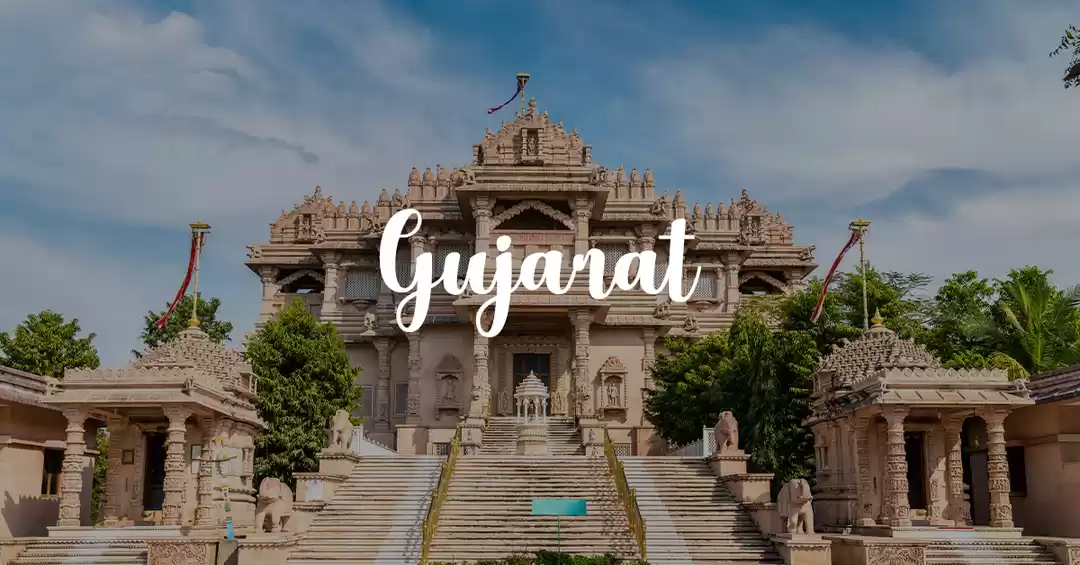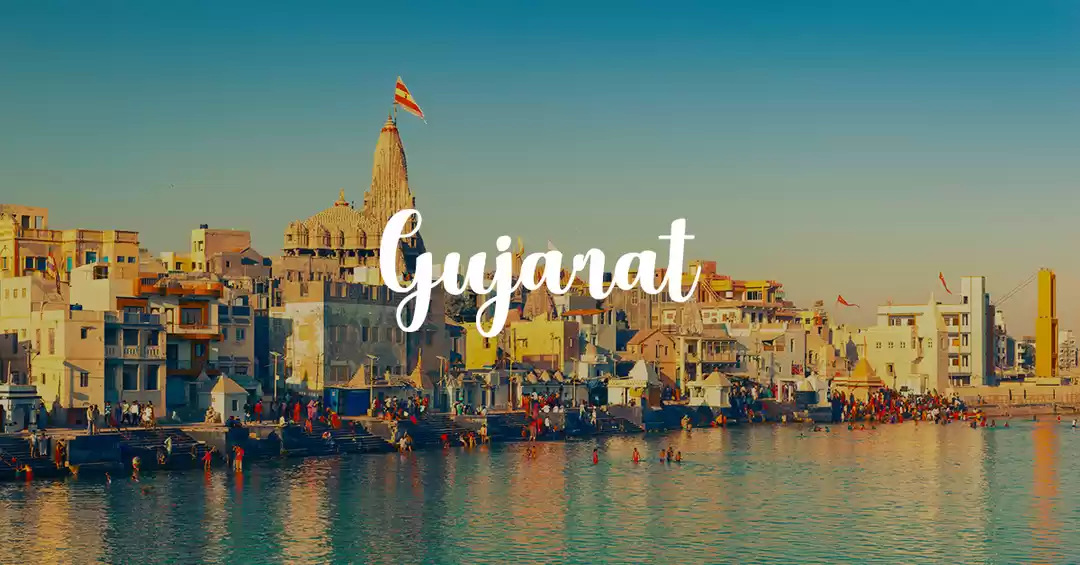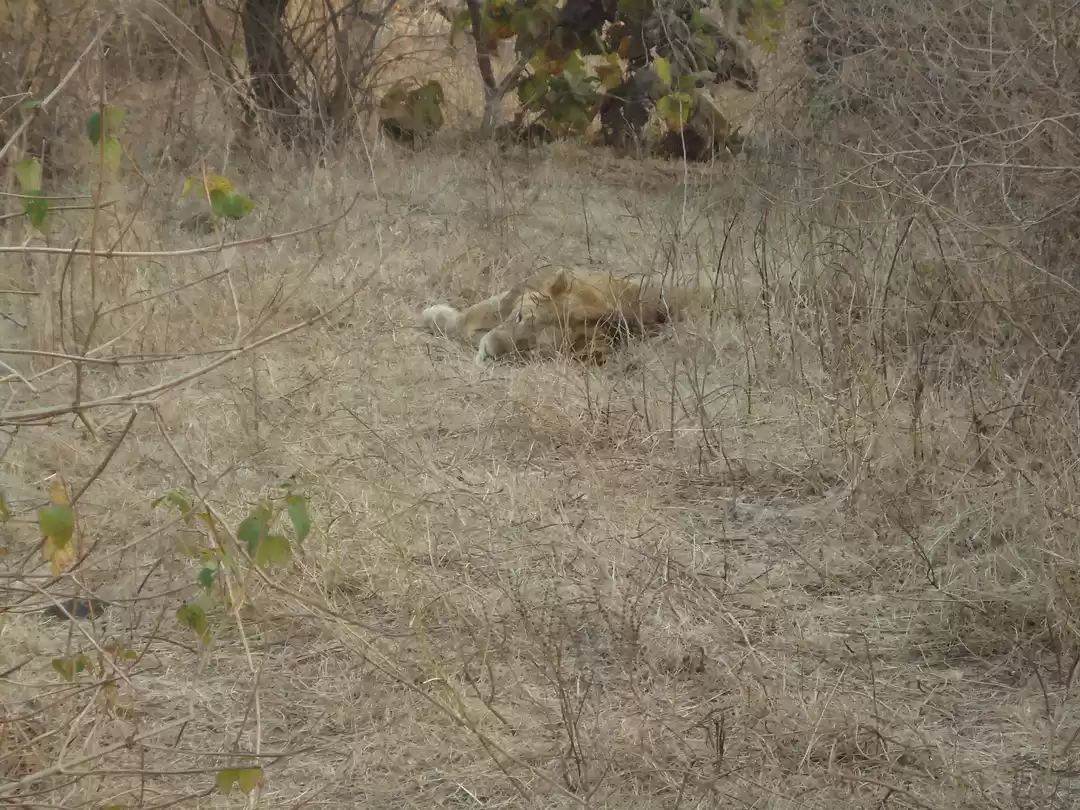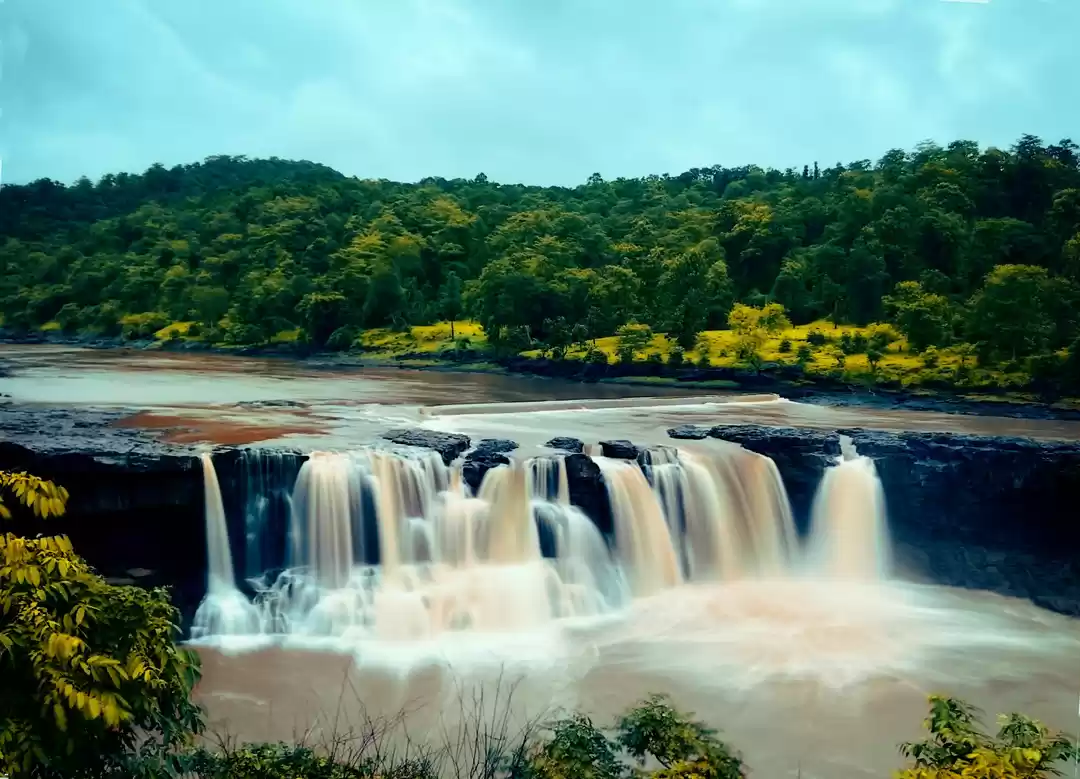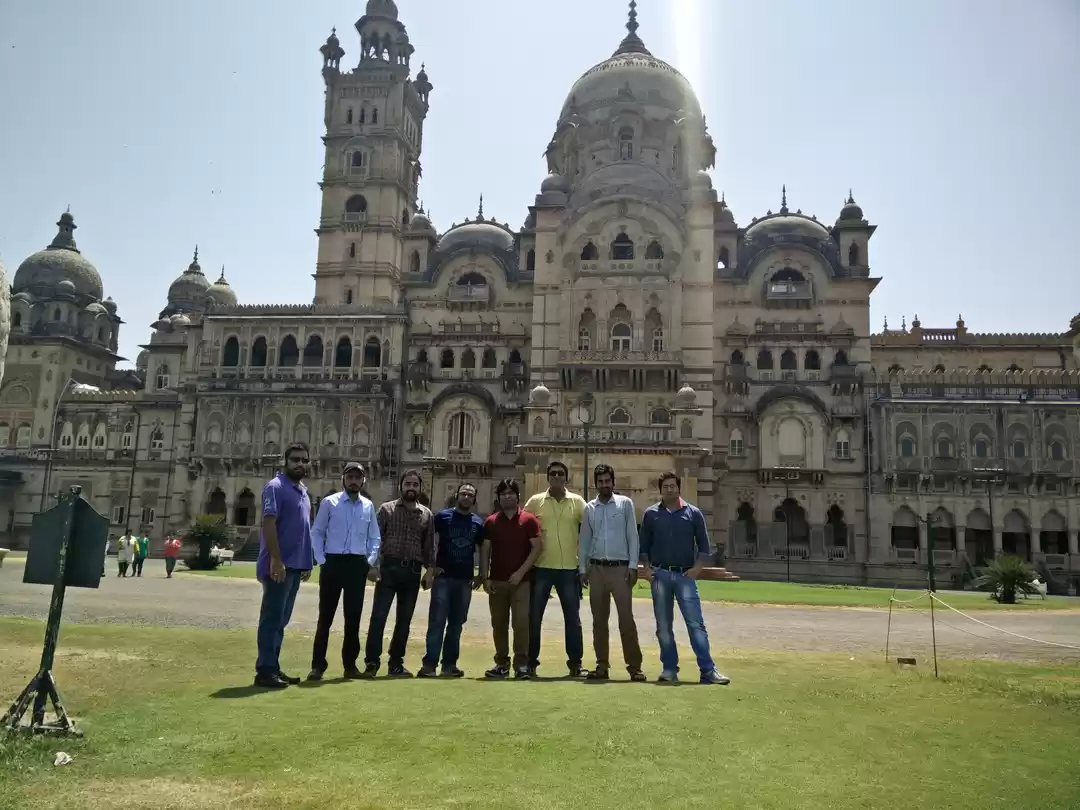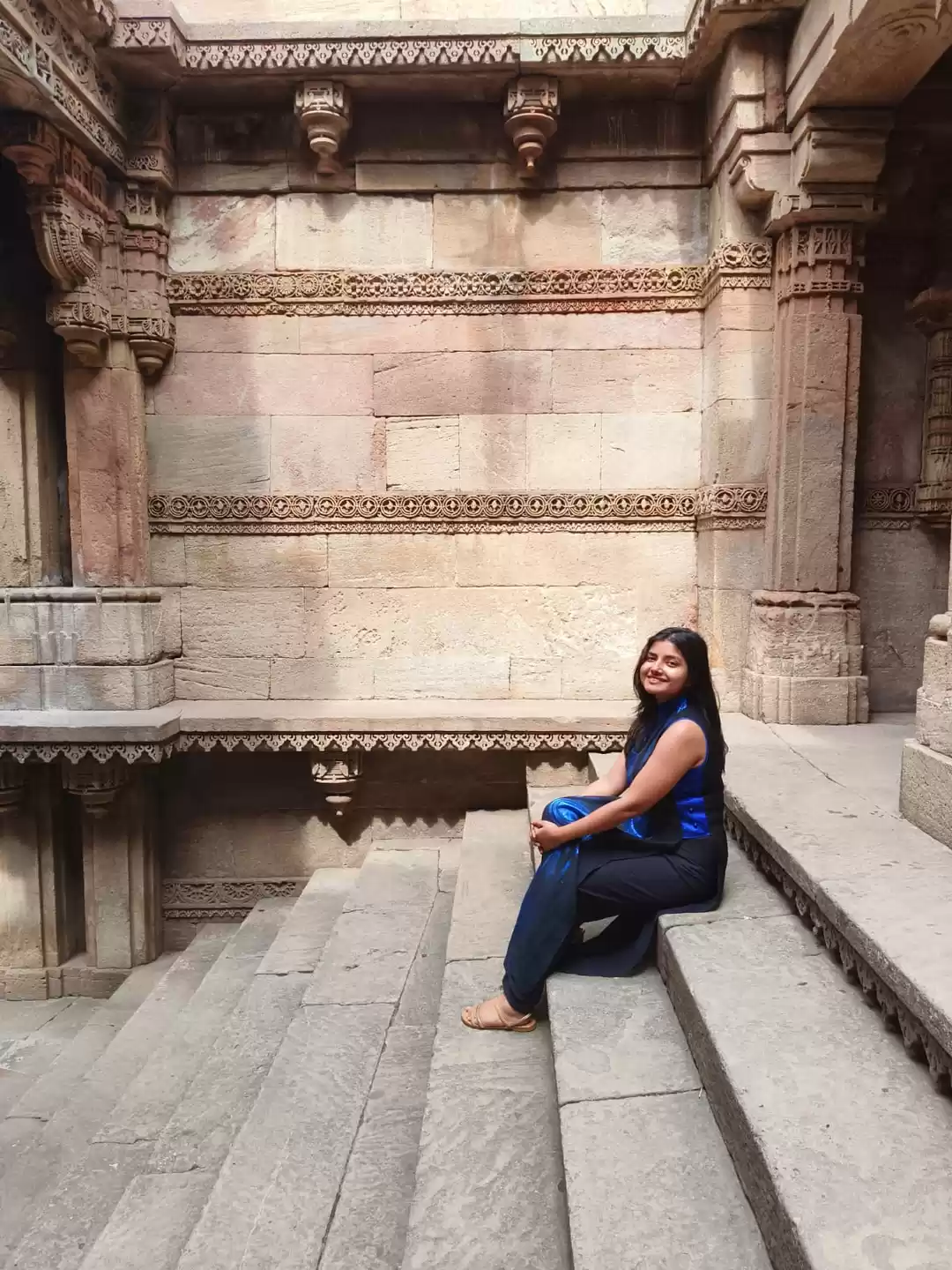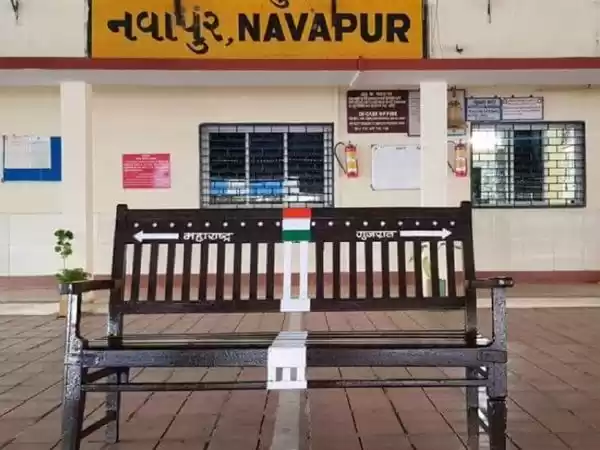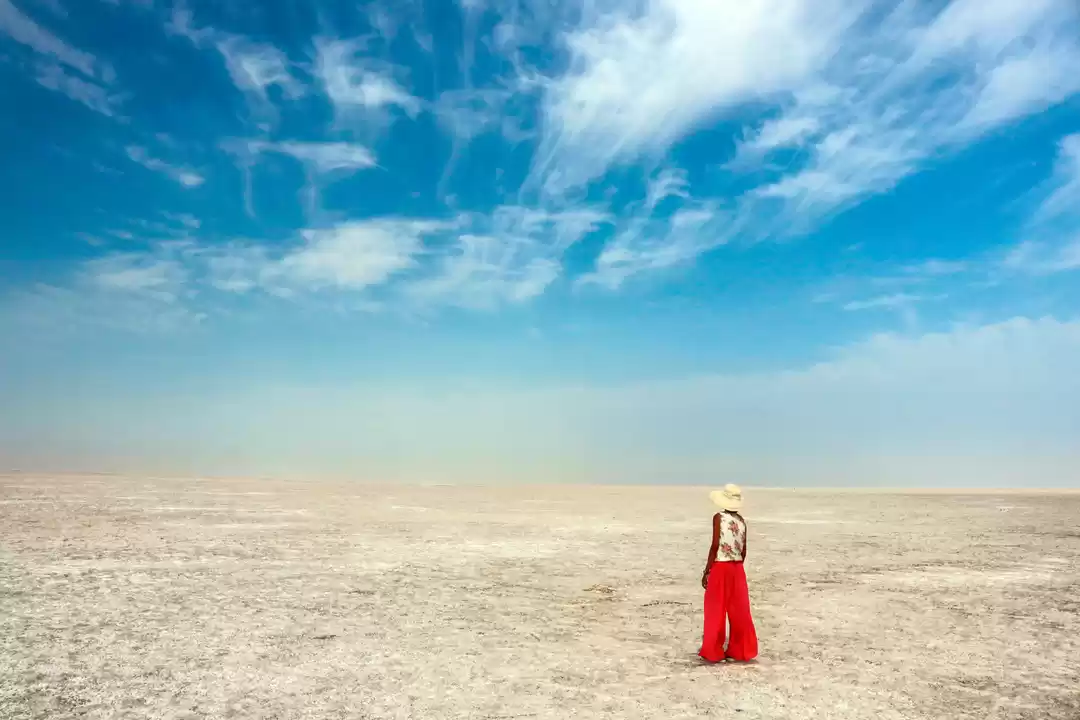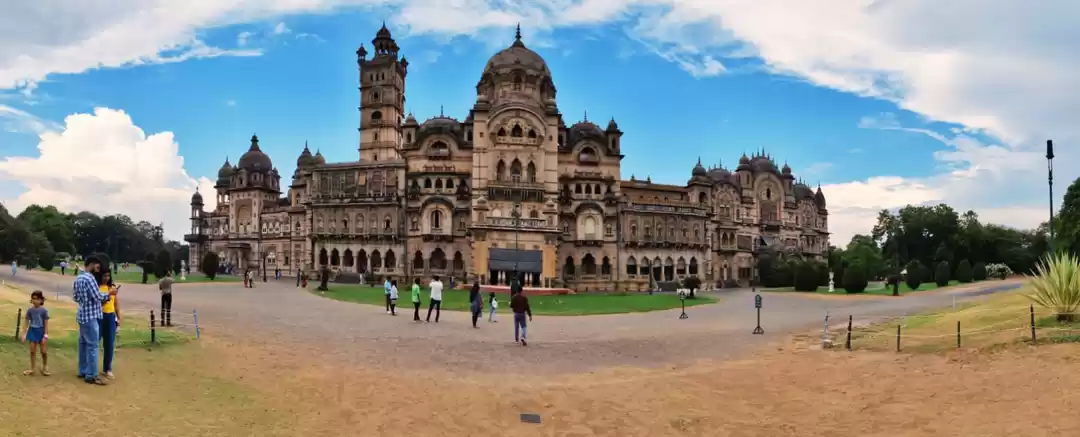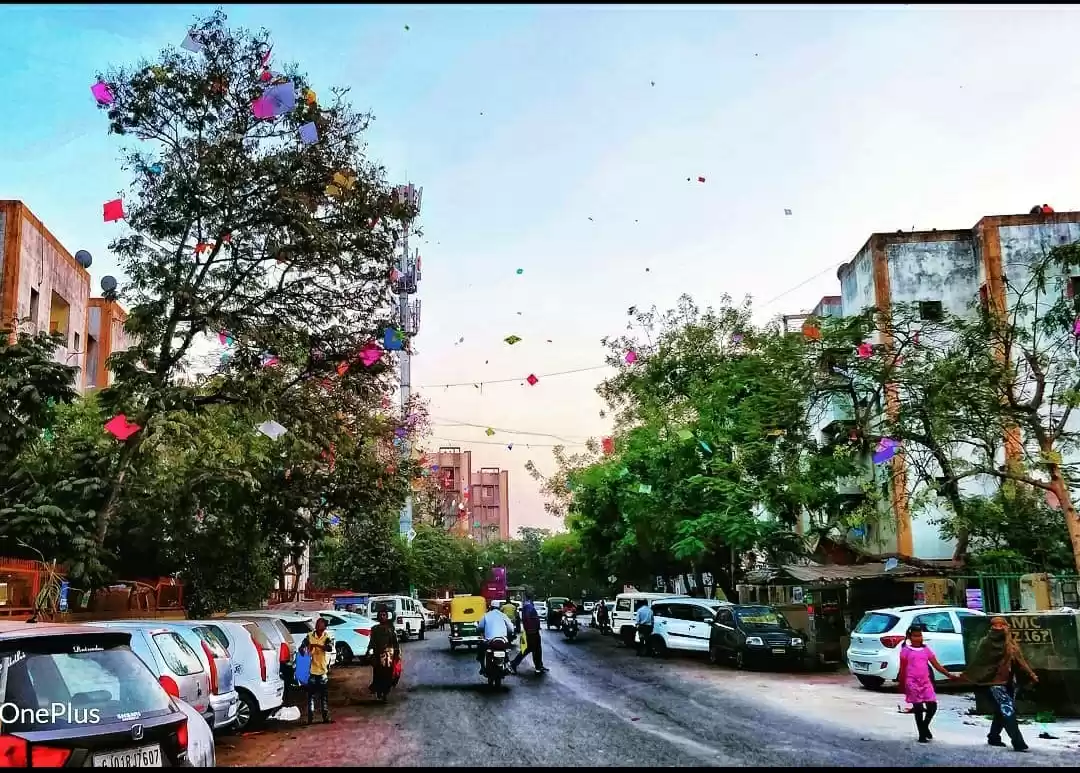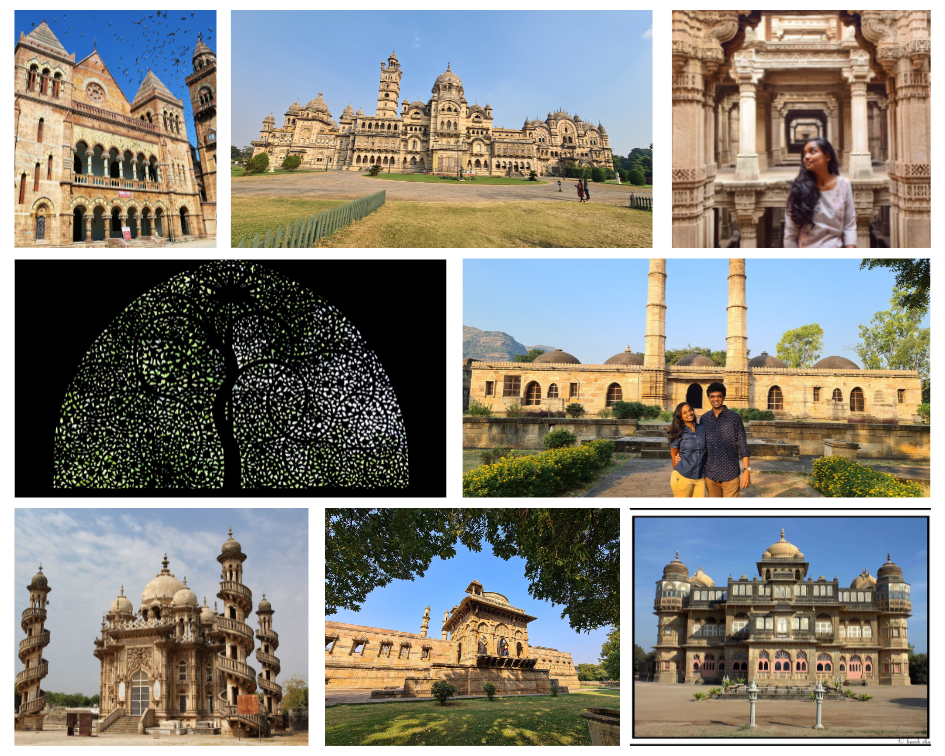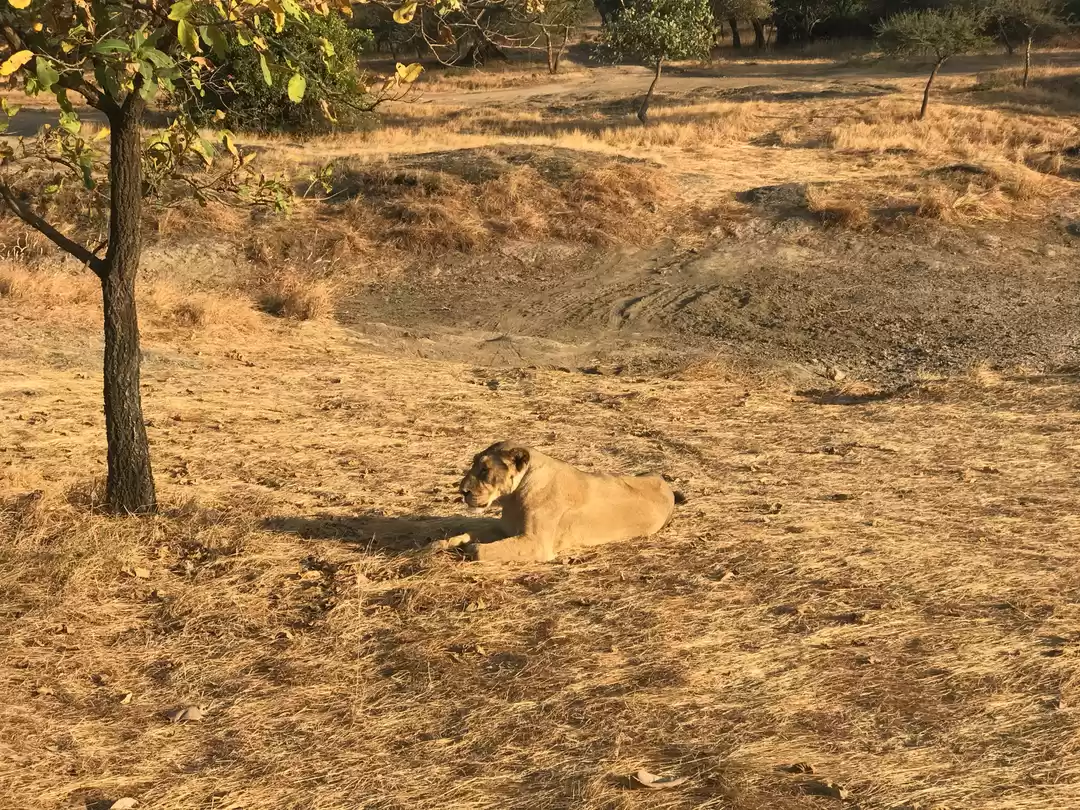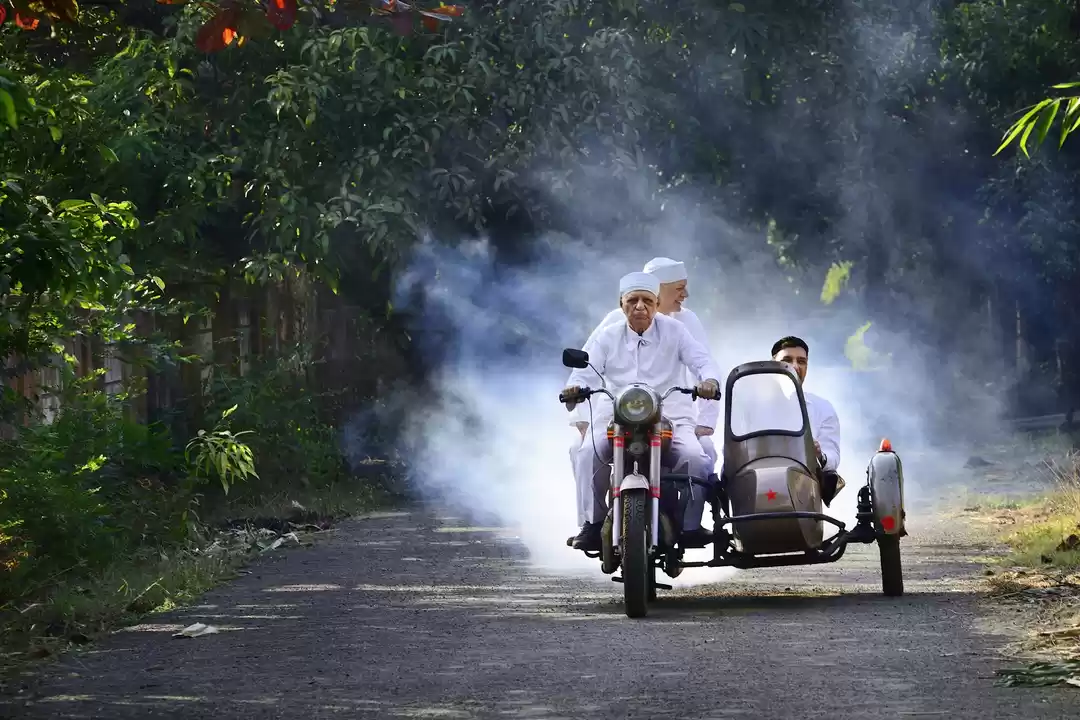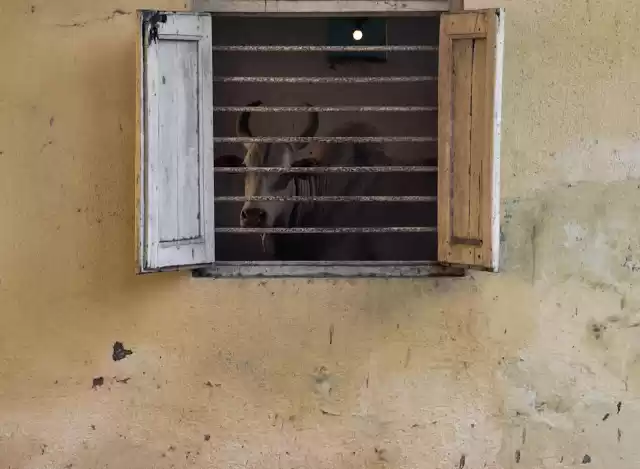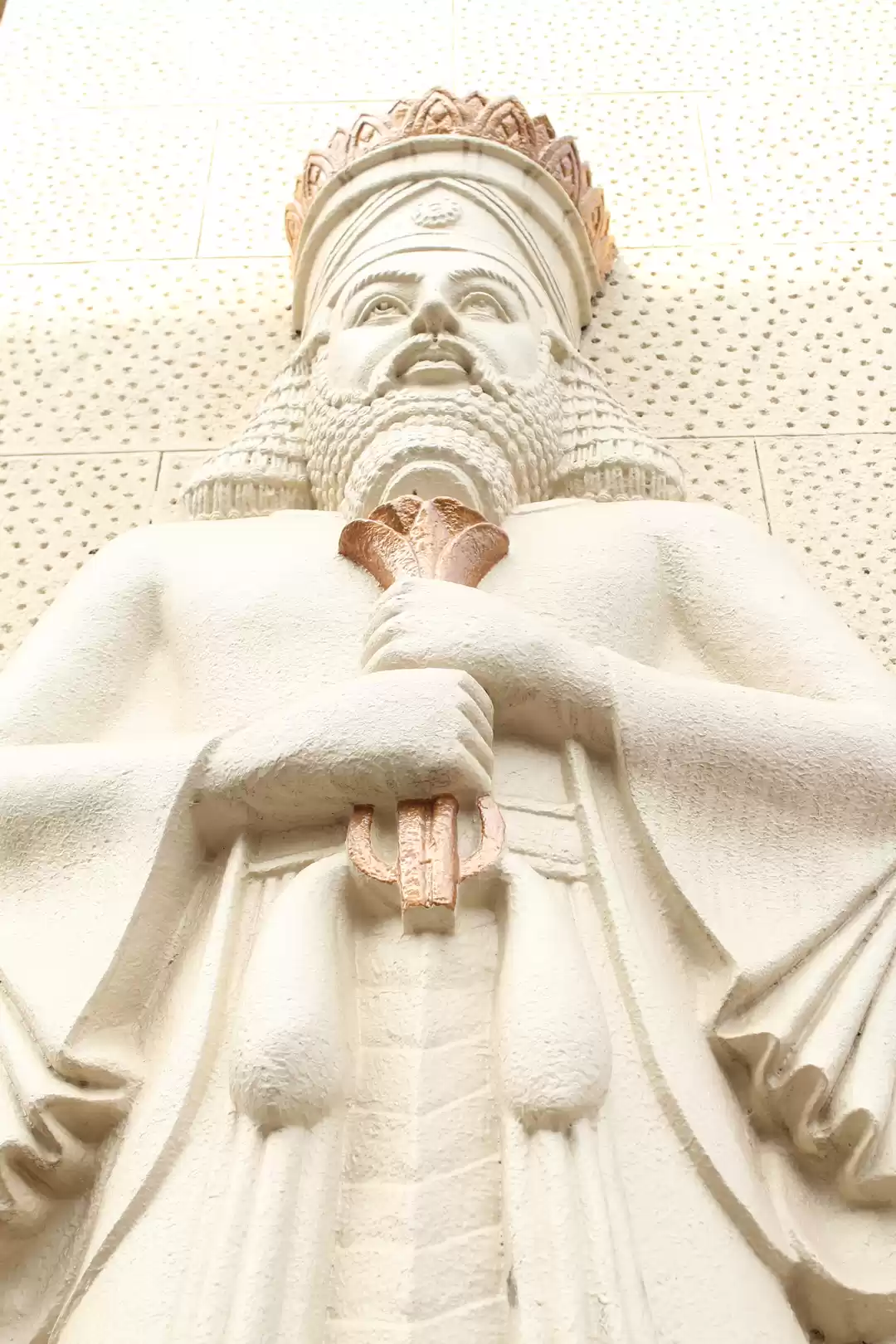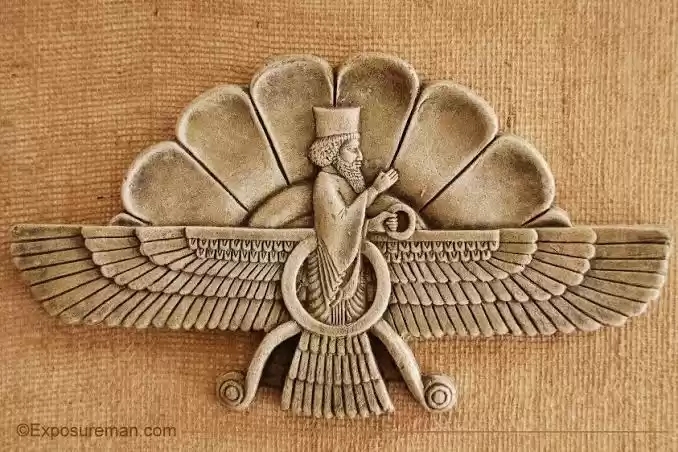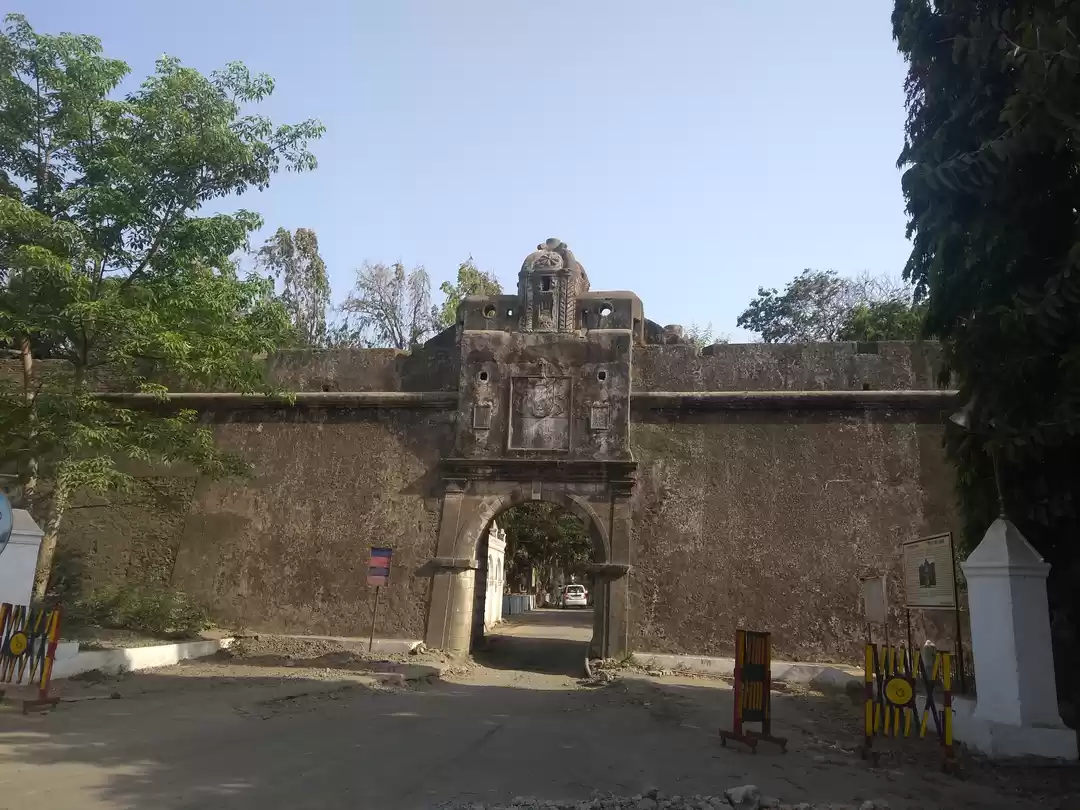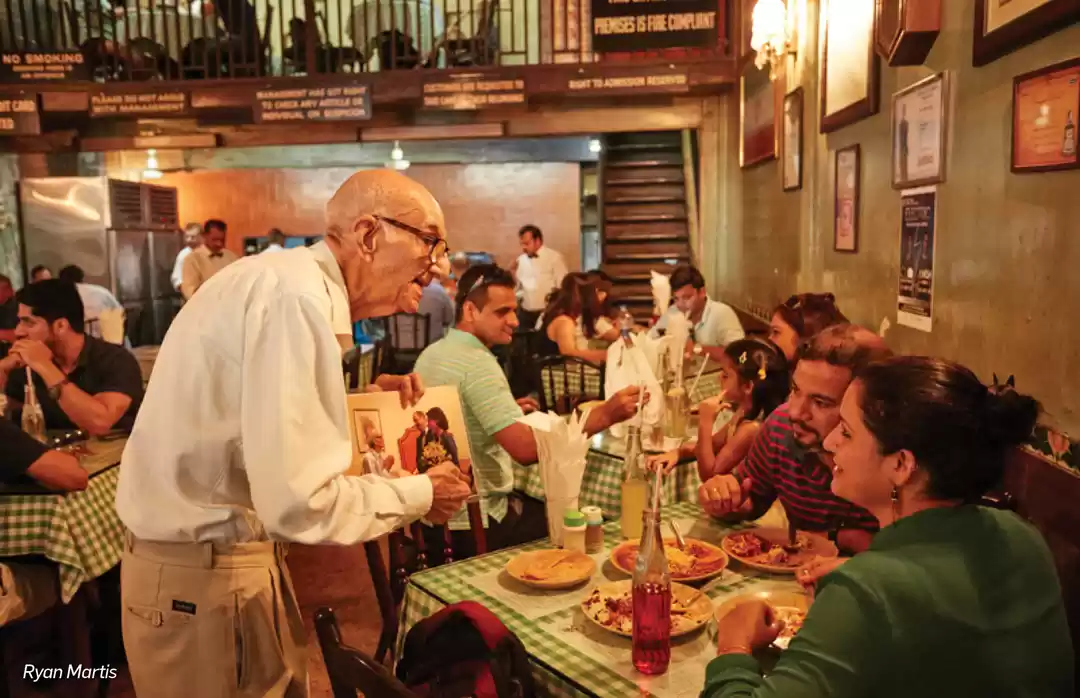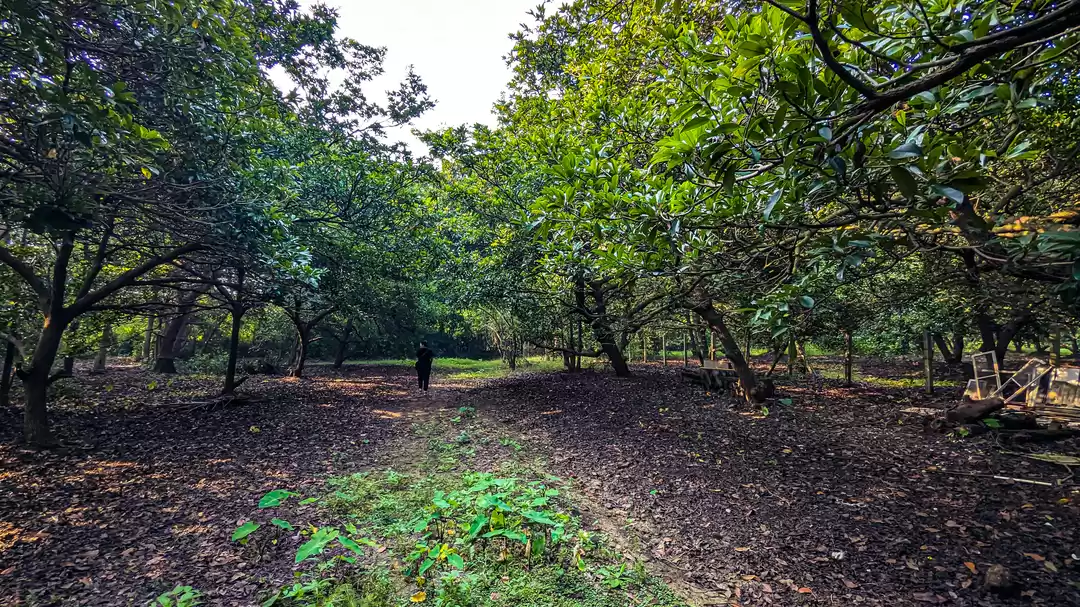On my recent trip to Vapi, I decided to take a day's tour to the nearby Parsi coastal village called Udvada. The most important Zoroastrian religious center with lot of heritage value to it, Udvada is frequented by Parsis and Iranis from all over the world. However, not many non-Parsis visit Udvada as the village has stayed away from branding itself as a heritage destination. Also non-Parsis are not allowed in the supreme Parsi Fire Temple (Agiyari), called Atash Behram located in Udvada. But in my case, the photographer in me gets awakened whenever I hear about a heritage destination. And that's followed by the definite visit to that place.

After doing some internet research and gathering information from some Parsi friends, I pushed off to Udvada.
Along with it being a religious center, Udvada is also a paradise of old bungalows with a blend of Iranian, Portuguese and Gujarati architecture. But, the village had altogether a different origin. It used to be known as 'Unth-Vada', an area with plenty of fodder for Unth, i.e. camels. Over the time, the name got corrupted into Udvada. It got populated by Parsis after their sacred fire was shifted here to Atash Behram in 1742 from Navsari, a town near Surat in Gujarat.
Before I share the further account of my visit to Udvada and details of Iranshah Atash Behram, it is worth to take a quick look at the history of Parsis and Udvada. (Source Wikipedia and Zoroastrian Information Center at Udvada)
Udvada: A sweet blending with the heritage places of India







Zoroastrians, who are also known as Parsis, immigrated to India from Iran in about 10 th century AD. The word Parsi is derived from the old name of Iran, i.e. Persia. The Parsis fled from Persia to protect themselves and their religion, Zoroastrianism from Arab invaders to Persia. They even brought along the sacred fire from the Zoroastrian temple in Iran with them. According to Zoroastrian Information Center in Udvada, Parsis first settled in Diu and lived there for 19 years.
After the astrology and guidance of the head priest then, Parsis again sailed to Sanjan where they were welcomed by King Jadi Rana with the bowl full of milk. It gestured that the kingdom is too crowded for the outsiders to be a part of. The Dasturji i.e. the head priest reverted to the king in a similar gesture, but a bit more what we call proactively today. He sent the milk back sweetening it with sugar. With this reply, he conveyed that just as the sugar melted in the milk making it sweet, they too shall blend with the locals. They shall be the part of the kingdom as the locals are. Following this, the king allowed them to settle in Sanjan with certain conditions. One of the important conditions was, as prevailed in that era, Zoroastrians would never convert the locals into their religion like other foreigners did. To this, the Zoroastrians assured that they would never let any non-Zoroastrians enter their temple. Since then, this promise is still strictly followed all over India.
According to a historical account, Qissa-I Sanjan (Story of Sanjan) Parsis built their first fire temple, Atash Warharan, in Sanjan. Even here they were again tyrannized by the Muslim invaders and they had to hide in caves near Sanjan. They lived there for 12 years with their holy fire. From there they moved to Bansdah and then to Navsari before finally arriving at Udvada where the fire is burning today since 1742. The land of Udvada is supposed to be gifted by the King of Mandvi to the Parsis. Even today, along with the fire-temple, Parsis even have a sacred fire in their house as fire and clean water, respectively known as Atar and Aban, represent pureness.
Photo-walking in the picturesque and slender lanes of Udvada

My arrival to Udvada village was welcomed by a cinematic site of an old bungalow with the backdrop of blue sky and patches of white clouds. While strolling on the silent, narrow main road, I realized that I had never seen a village as peaceful and noiseless as Udvada. But even in its tranquility, I could sense an unprecedented vibrancy. It also illustrated the harmonious community living that is rarely seen today in times of hustle-bustle.
Amusingly, I found this sleepy hamlet to be so calm and quite that I could hear the rooster crowing in some faraway lane. With rooster doing the needful, I guessed the residents never relied on an alarm to wake up in the morning in this somnolent village.
Walking a bit further into the slender lanes, I could behold an array of other old Parsi bungalows that gilded both the sides of the paved street. Even though they had several identical features, each bungalow had their own distinct beauty with elements from Persian and Portuguese architecture.






I observed that most of the roofed houses were adorned with salient Persian elements like floral grills on the balcony. One of the houses even had grills on the balcony that looked like face of Queen Elizabeth. The angles supporting the façade on the top floor too had decorative designs. Some of the common elements like the arched entrances and windows were bejeweled with floral frescoes. Most of the houses also had columns that reinforced the top floor. However, the thing that was definitely found in almost all the bungalows was the well in its compound or somewhere nearby.







Parsi's love for relaxation was apparent from the arched sitting platform in veranda wall, the swing and especially the reclining chair, known as 'aaram khursi' (resting chair) in most of the houses. Its presence in all the houses and verandas portrayed the liking of 'siesta' by all locals and added to the village's sleepy environment.




At the same time, the strong religious faith of Parsi's was pretty evident with the framed painting of Zarathustra, the founder of Zoroastrianism, in white robes and a long beard, hanging on the top of the main entrance. Each houses also had a small lamp or lantern, with a bulb or fire lit in it, on the entrance as a symbol of the sacred fire in the temple.


Passing through many empty houses in this coastal colony, I noticed the decline in Parsi population in Udvada. Many of these houses were left uninhibited as a lot of Parsis from Udvada have moved to bigger cities with better work opportunities. But those eerily beautiful abandoned houses with outstanding architectural elements boasted of once prevailing luxuriousness in Udvada.







While photo-walking on the streets, some old locals gave me curious looks an 'outsider' usually gets. However, Parsis are extremely friendly and jovial people. While walking on the Dastur Street, I couldn't stop myself from peeping in Jamshedji's house opposite to the fire temple.






The veranda of his two storied house had a swing, two old fashioned wooden door entrance, and windows. As I ascend, Jamshedji, fondly known as Jimmy Uncle, came out on seeing me. Thankfully, his face had a welcoming grin. I explained him about my inquisitiveness to have a glance at the antique interior of the house. He merrily invited me in and showed me around. The antique, teak wood furniture, including the reclining chair and an elegant chandelier, graced the living room. The room with white colored walls and tiles radiated positive vibes.
Behind the dining room, surrounded by kitchen and store area, was another veranda. A disassembled old-fashioned motorcycle in the backyard surprised me. "It's a vintage BMW motorcycle that I often open up for servicing", said Jamshedji on inquiring about the model. Also in the veranda was a deep well. "The water from the well is used for various purposes from cooking food to religious ceremonies and rituals", Jamshedji explained.
After bidding adieu to Jamshedji, I went further to the temple street to take a glimpse of the other houses on the street. On the end of the street is the famous Parsi restaurant Ashishvangh which is known for serving non-vegetarian Parsi delicacies, especially Biryani and Dhanshak.
While returning on the same street, I stopped by to have a quick look at the magnificent fire temple, Iranshah Atash Behram.
Iranshah Atash Behram


Located on the magnificent Dastur Street, Atash Behram is also known as Iran Shah, i.e. the 'King of Iran' in memory of the overthrown Zoroastrian king of Persia. As promised by the earlier Parsis to not let any non-Parsis enter the temple, Atash Behram is inaccessible by non-Parsis. Hence, I could only admire it from the main gates of the compound.
The present day temple was built by Dinshaw Dorabjee Mistry from Mumbai. The main entrance has the statues of two priestly figures. The roofed top floor of the temple mostly has a wooden construction with windows and ventilators. This structure stands on the top of Persian column capitals with large scrolling forms and horned bulls on it. I was really amazed to see how the bulls played a significant role in Zoroastrianism like Hinduism. The entrance of the inner part of the temple is guarded by a pair of winged, half human - half bull. I later found that these designs were inspired from the Gate of All Nations, the ancient palace of Achaemenid king, Xerxes 1 of Persepolis, Iran.
To get an overview of the fire temple and know more about the religion, history and tradition of Zoroastrians, I visited the museum, Zoroastrian Information Center further ahead of the new JJ Dharamshala on the coastal road.
Zoroastrian Information Center
Open throughout the week from 09.00 am to 6.00 pm.
After walking for about few hundred meters, I reached the museum known as Zoroastrian Information Center. Again in an old Parsi bungalow, this small museum is a great place for information on Zoroastrian history, culture and traditions. I spent about a couple of hours reading about the Zoroastrian history. There's also a room which displays various items used in religious ceremony and has a model of sacred fire to give an idea to the non-Parsi visitors.
A nearby shop sells mementoes that one could carry home as a souvenir of quiet Udvada.
Other Places of Interest
Coastal road of Udvada
I later proceeded to the road on the coastal side of Udvada. On the way, I came across other beautiful old bungalows and took their photos. Some of the abandoned houses looked eerily attractive with overgrown creepers. Khurshid Villa on the line of the new JJ Dharamshala and Sir Ratan Tata Building really astounded me.
The entire road was full of such old bungalows. Some old mansions are still operational and were inhabited by locals or used as a weekend homes by the Parsis staying elsewhere.






Udvada Beach
I also managed to take a quick run to the rocky beach. The beach did not have any crowd at all and seemed pretty isolated since it was a rocky beach. If I had planned to stay at Udvada, I would have thought of coming to the beach again to enjoy the sunset. However, I realized it would be worth spending time in the lanes than the beach. May be, watching a sunset would be a good idea on my next visit.

Also, Jampore beach near Vapi and Tithal near Valsad are good beaches to enjoy the beachside outing.
Della Majestic
Further ahead on the JJ Dharamshala lane, an entrance of an old bungalow with a half bull half man statue caught my attention. I entered the ruined bungalow known as Della Majestic, once known as Majestic Hotel. The veranda of this ruined hotel had huge Zoroastrian sculptures made up of Plaster of Paris (POP).


Yadav, the security man in the premises welcomed me and showed me around. He shared that the sculptures of huge bulls, half bull half man, Iranian columns, etc. lying in the premises were used for Parsi festivals as decorative.




Once a classy inn frequented by elite and high profile Parsis, the Majestic Hotel was pretty much in ruins. Its dilapidated rooms gave me a fair idea of its grandeur in its hay-days. "Due to its sea facing location, Parsis and others used to come and stay here during its glory times", said Yadav.




The place got shut in 1990 as many Parsis moved out of Udvada. Yadav also mentioned that by then the building of the hotel had started getting affected by the sea which led to its dilapidation. Now the place is used to store POP statues of Zoroastrian religious characters like bulls, Persian soldiers with spheres, etc. "This place is many times used for shooting horror television serials", said Yadav.
The Bhikhaji Unawala Zoroastrian Library
Open on weekdays from 10.00 am to 12.00 pm



Run in another beautiful vintage bungalow on the main road the construction of The Bhikhaji Unawala Zoroastrian Library dates back to 1928. The library has a good collection of really old books on various topics including the Parsi history and literature. The reading room has books stored in the old teakwood cupboards and its walls are decked with old photos of Parsi trustees of the library. Its manager, Harish Shirke was a wonderful guide and showed me some nice old books like 'Vivid Glimpses of India', 'The Eastern Iranians in Ancient Time', 'Parsis and Sports', 'The Handy Boy's Book', etc.




Food and Drinks
A foodie that I'm, my travel planning always include extensive research about the food specialty in any place I travel to. And in Udvada since it's a Parsi town, food is as interesting as its culture and lifestyle.
Fortunately, while planning my trip to Udvada, I got in touch with Zarine Bharda beforehand through Instagram. Zarine gave me some great insights about Udvada that helped me go around in the village. She runs a bakery in Udvada called Bharda Bakery and bakes delicious cupcakes, muffins and other confectionaries on order. Since I was not aware about the ordering part, she treated me with some delicious lemon - poppy seed and strawberry cupcakes and chocolate muffin that she had already made. Zarine can be reached out for advanced order on order@bhardabakery.com or on her cell number, i.e. +91-932-739-3282.

Udvada is famous for traditional Parsi non-vegetarian food like Kheema Pav, Dhanshak that can be had with Chicken Pulao, Altei Paleti made up of chicken and Khurchan made up of goat meat. This coastal town also has its fish specialties like Fried Fish served with some mouthwatering masala. Most of these dishes could be enjoyed at Ashishvangh, Globe Hotel or JJ Dharamshala. There were really fewer options for vegetarians like me, I did find small hotel in a house on the main road that served Gujarati food. But it served only on advanced ordering. So I realized it's best to carry some eatables if one's a vegetarian. The stores on the Udvada main road sell biscuits, dry snacks and mineral water that I bought from there.
Udvada also has a couple of its unusual but delicious drink called Dudh na Puff, a drink made of milk and only served early in the morning. The specialty of this drink is in its chilled froth that is served with cardamom and nutmeg. The drink is made by chilling the froth in an earthen pot overnight. Unfortunately, the sellers only sell it with advanced ordering so I could not have it. For the later part of the day, after lunch, I also enjoyed drinking the local aerated drinks Sunta Raspberry and Ice-cream Soda.
On the Dastur Street, I tried a number of local specialties including the refreshing hand churned mango and chikoo (sapodilla) ice-cream. I really got amused as it did not really have any shop but was sold in an auto-rickshaw. From the same street I also bought some local snacks, a sweet called Bhakhra, some papad, and spices for Biryani, Dhanshak and Curry. I also carried home some Nankhatai, i.e. sweet shortbread biscuits which are also Parsi specialties as well as some packs of dried pepper mints sold there. On the way home, I stopped by and got a pack of Jeera Biscuits and Butter Khari from Irani Bakery.

Accommodation
Udvada has limited accommodation facilities. JJ Dharamshala and Sodawaterwala Dharamshala are the two places along with a few other World Zoroastrian Organization lodges where only Parsis could stay. But for non-Parsis, Globe Hotel and Irani Hotel has good accommodation facilities. All the accommodation has AC / Non AC rooms and serve typically Parsi food. Irani Hotel has a roof top restaurant from where I could enjoy a nice view of the beach on one side and the village on the other.
But there are good options available in Vapi and Valsad which are about 15 and 23 km respectively.
Commuting
Few trains stop at Udvada station which itself is about 6 km away from the town. A local passenger train, Sanjan Local leaves from Vapi at 7.10 am and reaches Udvada by 7.30 am. I took an auto-rickshaw from Vapi which took about 30 mins to reach Udvada and cost be Rs. 150/- one way. While returning, I had to wait for about 45 minutes at the auto-rickshaw stand at Udvada waiting for an auto-rickshaw.
Udvada can also be reached by hiring a taxi for about half a day from Vapi or Valsad. However, that may turn out to be slightly expensive as they charge for minimum 300 km.
Finally, after an interesting day of 'photo-walking' and hogging on Parsi delicacies, I walked towards the auto-rickshaw stand. After spending a day at Udvada, my belief that living a content and blissful life is not impossible even in today's world got even stronger. Just as Parsis have blended with the rest of the Indians as sugar in milk, so has Udvada blended as a heritage and increased the cultural value of the state. I wish that Udvada always retains its 'sleeping' beauty and hopefully one day in my older days, I'll be able to go and live there.
On his recent trip to Udvada during the Parsi festival, Iranshah Udvada Utsav, Arun Jaitley, the finance minister of India, said during his speech that "We (India) need a lot more of you (Parsis)". I couldn't agree with him more.
Trip first published on THEUNEXPLOREDWORLD





